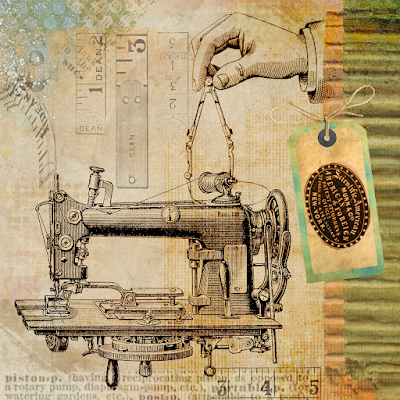Introduction:
The invention of the sewing machine stands as a pivotal moment in the history of textiles and garment manufacturing. This ingenious device transformed the labor-intensive task of hand-sewing into a faster, more efficient, and accessible process. The impact of the sewing machine on the fashion industry, economy, and even social dynamics cannot be overstated.
The Early Days of Sewing:
Before the sewing machine came into existence, the art of sewing was a time-consuming and highly skilled craft performed exclusively by hand. Clothing, linens, and other textiles were painstakingly created through hours of intricate stitching. As demand for textiles increased with the rise of industrialization, the need for a more efficient method became evident.
The Pioneer: Thomas Saint's Design (1790):
While many inventors attempted to create a mechanical sewing device, it was Thomas Saint, an Englishman, who is often credited with the first sewing machine design in 1790. His machine, however, was not widely known or utilized during his time, and the concept did not gain the recognition it deserved.
The Forgotten Years:
After Thomas Saint's design, progress in the development of sewing machines slowed. Various inventors tried their hands at improving the concept, but it wasn't until the early 19th century that the sewing machine truly began to take shape.
The Breakthrough: Elias Howe's Lockstitch (1846):
In 1846, American inventor Elias Howe successfully patented the lockstitch sewing machine. This breakthrough marked a turning point in the history of textiles. The lockstitch mechanism, which uses two threads to interlock, greatly strengthened the seam, making it more durable than previous sewing methods.
Despite the innovation, Howe faced challenges in popularizing his invention. Skepticism, patent disputes, and financial struggles hindered widespread adoption. It wasn't until Isaac Singer, a brilliant marketer, entered the scene that the sewing machine gained widespread recognition.
Singer's Contribution and the Rise of Mass Production:
Isaac Singer improved upon Howe's design, adding features like the foot treadle and the ability to sew in any direction. Singer's marketing prowess played a crucial role in making the sewing machine a household staple. The introduction of installment payments made the machines accessible to a broader audience.
The sewing machine revolutionized the textile industry by enabling mass production of clothing and textiles. What once took hours or even days to produce by hand could now be accomplished in a fraction of the time. This efficiency led to the growth of the ready-to-wear industry, transforming the way people approached fashion.
Impact on Society:
The invention of the sewing machine had far-reaching effects on society. It liberated individuals, particularly women, from the drudgery of hand-sewing, allowing them to pursue other interests and work outside the home. The ready availability of affordable clothing also contributed to changing fashion trends and social dynamics.
Conclusion:
The sewing machine, from its humble beginnings in the 18th century to its evolution into the indispensable household item we know today, has left an indelible mark on the history of textiles and manufacturing. The ingenuity of inventors like Thomas Saint, Elias Howe, and Isaac Singer paved the way for a more efficient, accessible, and innovative approach to clothing production. As we continue to witness advancements in technology, it's essential to recognize and appreciate the impact of inventions like the sewing machine, which played a crucial role in shaping the world as we know it.







0 Comments